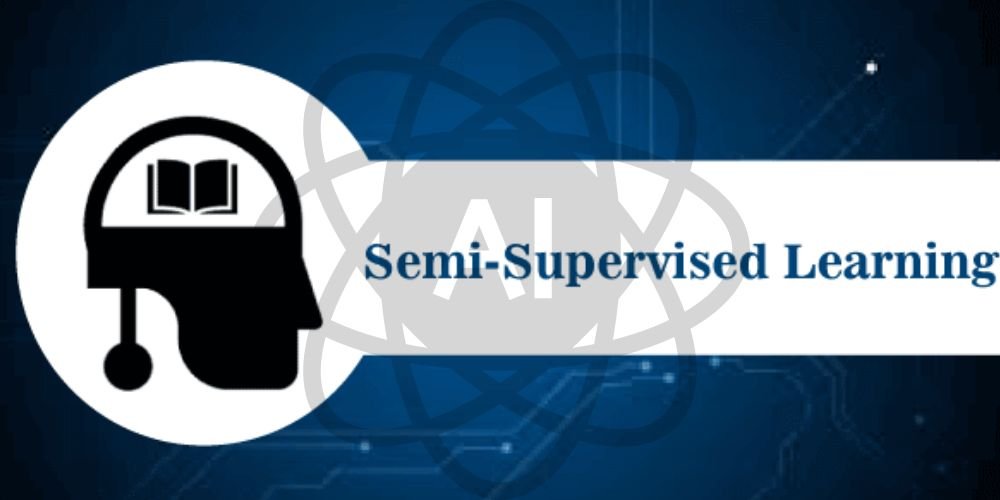Semi-supervised learning emerges as a compelling paradigm within the expansive realm of machine learning, strategically navigating the middle ground between fully labeled and completely unlabeled datasets. This article will meticulously explore the fundamental principles, diverse methodologies, key advantages, notable applications, and challenges associated with semi-supervised learning, shedding light on its pivotal role in harnessing the combined power of labeled and unlabeled data.
Unveiling Semi-Supervised Learning
Semi-supervised learning is a unique approach that capitalizes on the synergy of labeled and unlabeled data. While traditional supervised learning relies solely on labeled examples, and unsupervised learning ventures into the uncharted territory of unlabeled data, semi-supervised learning seeks to harness the potential of both. This strategic amalgamation aims to improve model performance by leveraging the informative nature of labeled instances while capitalizing on the abundance of unlabeled data.
Core Components of Semi-Supervised Learning
At the heart of semi-supervised learning lies the fusion of labeled and unlabeled data, creating a hybrid training set. The model learns from the explicit guidance provided by labeled examples and the inherent patterns within the vast sea of unlabeled instances. Balancing the utilization of both data types is crucial, with algorithms designed to extract meaningful information from the unlabeled majority while refining their predictive capabilities with the labeled minority.
Self-Training and Co-Training Approaches
Two prominent methodologies within semi-supervised learning are self-training and co-training. In self-training, the model iteratively labels unlabeled data with high-confidence predictions, gradually expanding its labeled dataset. Co-training involves training multiple models on different subsets of features or data, allowing them to enhance each other’s understanding and predictive capabilities collaboratively. These approaches exemplify the adaptability and innovation within the realm of semi-supervised learning.
The Role of Label Propagation
Label propagation is a key concept in semi-supervised learning, enabling the transfer of labels from labeled to unlabeled instances. Algorithms use the relationships and similarities discovered within the labeled data to propagate information to neighboring unlabeled data points, effectively infusing knowledge into the broader dataset. This process facilitates the exploitation of the latent structures in labeled and unlabeled portions, promoting enhanced generalization.
Training Models in Semi-Supervised Learning
The training process in semi-supervised learning involves the integration of labeled and unlabeled data during model optimization. Algorithms are designed to adapt to the dual nature of the dataset, ensuring that the model can effectively learn from both sources of information. The iterative refinement of the model involves leveraging labeled data for explicit guidance and unlabeled data for uncovering hidden patterns, striking a delicate balance that fosters improved predictive performance.
Active Learning Strategies
Semi-supervised learning often employs active learning strategies to select instances for labeling strategically. Active learning algorithms identify data points where the model exhibits uncertainty, and these instances are then added to the labeled dataset. This iterative process maximizes the model’s learning potential by focusing on the most informative instances, optimizing its performance with limited labeled resources.
Ensemble Approaches in Semi-Supervised Learning
Combining multiple models to enhance predictive accuracy, Ensemble methods find significant application in semi-supervised learning. Ensemble approaches amplify the robustness of predictions by training diverse models on different subsets of labeled and unlabeled data. Techniques such as co-training with ensemble models showcase the adaptability of semi-supervised learning in harnessing the collective intelligence of multiple learners.
Incorporating Domain Knowledge
Domain knowledge integration is a critical aspect of semi-supervised learning. Leveraging domain-specific information can guide the model in understanding the underlying structure of the data and making informed predictions. The interplay between domain expertise and semi-supervised learning amplifies the model’s capacity to discern meaningful patterns within the dataset.
Advantages of Semi-Supervised Learning
Semi-supervised learning offers many advantages, making it an appealing choice when acquiring large labeled datasets is challenging. The utilization of unlabeled data significantly enhances the model’s potential, allowing it to generalize well to unseen instances and adapt to the inherent complexities of real-world datasets.
Enhanced Generalization with Limited Labels
Incorporating unlabeled data empowers semi-supervised learning models to generalize effectively with limited labeled examples. It is particularly advantageous in domains where obtaining labeled data is resource-intensive or impractical, enabling the model to achieve remarkable performance with a smaller labeled dataset.
Cost-Efficiency in Model Training
Semi-supervised learning contributes to cost efficiency by reducing the need for extensive labeling efforts. By harnessing the untapped potential of unlabeled data, organizations can streamline their data annotation processes and allocate resources more judiciously, making semi-supervised learning an economically viable option.
Flexibility in Real-World Scenarios
The flexibility of semi-supervised learning shines in real-world scenarios characterized by a scarcity of labeled data. In healthcare, finance, or industrial settings, where obtaining labeled data can be challenging, semi-supervised learning emerges as a pragmatic solution, effectively leveraging available information.
Applications of Semi-Supervised Learning
Semi-supervised learning finds diverse applications across various domains, showcasing its adaptability and efficacy in real-world problem-solving.
Image and Speech Recognition
Semi-supervised learning excels in image and speech recognition tasks, where labeled datasets may be limited or costly to obtain. Models trained on a combination of labeled and unlabeled data demonstrate improved performance in accurately recognizing visual and auditory patterns.
Anomaly Detection in Cybersecurity
Semi-supervised learning plays a crucial role in cybersecurity by enhancing anomaly detection. Learning from normal and potentially malicious instances allows models to effectively identify unusual patterns and potential security threats.
Text Classification and Sentiment Analysis
Semi-supervised learning proves valuable in natural language processing applications, such as text classification and sentiment analysis. Models can use the wealth of unlabeled text data to discern intricate linguistic patterns and sentiments, improving their understanding of textual information.
Drug Discovery in Healthcare
In healthcare, semi-supervised learning aids drug discovery by leveraging labeled data on known compounds and vast amounts of unlabeled data on chemical structures. This approach expedites the identification of potential therapeutic compounds, accelerating the drug development process.
Challenges in Semi-Supervised Learning
While semi-supervised learning offers a potent solution, it has challenges. Addressing these challenges is imperative for unleashing the full potential of semi-supervised learning across various applications.
Ensuring Label Quality in Unlabeled Data
The quality of labels propagated from labeled to unlabeled data is critical. Inaccuracies in label propagation can impact model performance adversely. Ensuring a reliable mechanism for transferring accurate labels is an ongoing challenge in semi-supervised learning.
Handling Class Imbalance
Class imbalance is common in semi-supervised learning, especially when the labeled dataset contains a disproportionate number of instances from one class. Mitigating the impact of class imbalance on model performance requires careful consideration and innovative algorithmic approaches.
Model Robustness to Noisy Labels
Semi-supervised learning models may encounter noisy labels, especially when propagating information from labeled to unlabeled instances. Developing robust algorithms capable of discerning and mitigating the impact of noisy labels is essential for maintaining model accuracy.
Future Trends in Semi-Supervised Learning
As machine learning evolves, semi-supervised learning adapts to emerging trends, expanding its capabilities and applications.
Incorporation of Weak Supervision Techniques
The integration of weak supervision techniques represents a promising trend in semi-supervised learning. Weak supervision involves leveraging heuristics, rules, or other less precise forms of supervision to train models on large, potentially noisy datasets, further enriching the learning process.
Advances in Transfer Learning
Transfer learning, where knowledge gained from one task is applied to another related task, continues to advance within semi-supervised learning. Leveraging pre-trained models on large labeled datasets can enhance the performance of models on specific tasks with limited labeled data.
Hybrid Approaches with Unsupervised Learning
The fusion of semi-supervised learning with unsupervised learning techniques is gaining traction. Hybrid approaches that seamlessly combine labeled, unlabeled, and unstructured data aim to extract comprehensive insights, presenting new avenues for tackling complex problems in diverse domains.
Conclusion
Semi-supervised learning is a pivotal bridge, connecting the worlds of labeled and unlabeled data to create a holistic approach to machine learning. Its ability to harness the informative nature of labeled data while capitalizing on the abundance of unlabeled instances positions it as a pragmatic solution in real-world scenarios. While challenges persist, ongoing advancements and trends indicate a robust future for semi-supervised learning, solidifying its role in shaping the landscape of intelligent systems.”










